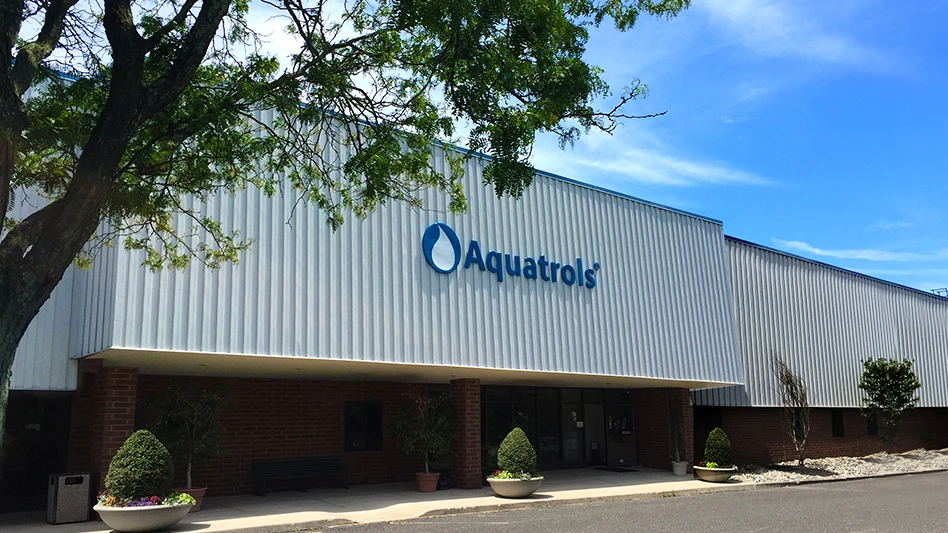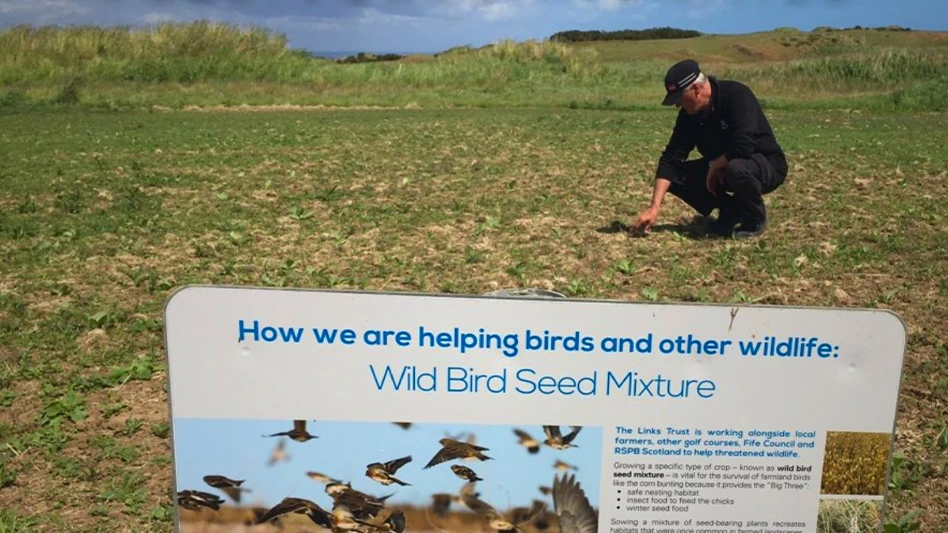
“They say it’s the 1,000-year flood. We just hope it’s true. We never want to see that again.” — Curtis Persinger

“There are tragedies everywhere. When you see something on TV, you’re like, ‘Oh gosh, that looks bad.’ But the next show comes on and it’s lost. This opened my eyes. When things like this happen, you have a new perspective.” — Kelly Shumate
Giving three, four, 13, 16, 28, 37, even 47 years to the golf courses intersected by a creek below mountains means enduring a myriad of weather conditions.
The creek rises, then it recedes. Days, weeks, months, years and decades of golf continue without resort guests giving much thought to how the uncontrollable must be managed to produce the pleasant four hours that lure repeat visitors to southern West Virginia.
It’s a cycle, albeit one without a predictable pattern. And the bad stuff never arrives at a good time.
On a Saturday in 2015, water rose from the banks of Howard’s Creek. Two days later, PGA Tour players started arriving in White Sulphur Springs, like they had been for every summer since 2010. Another storm lifted the creek from its banks a week after the 2015 Greenbrier Classic. Giving three, four, 13, 16, 28, 37, even 47 years to The Greenbrier also means turning the mucky into memorable for golfers with double-digit handicaps.
Easy summers – or for that matter, easy days – don’t exist. But the work is steady and employees return home to places such as White Sulphur Springs, Caldwell, Lewisburg and Rainelle, combined population 8,718, knowing they made the landscape more enjoyable for resort guests visiting Greenbrier County.
“It smelled like diesel fuel the whole time. I really didn’t know the area very well at the time. But you could assume things were happening because of what was coming through here.” — Chris Anderson
That satisfaction yielded personal conflicts as rain started falling harder on the morning of June 23, 2016, a Thursday two weeks before the start of the 2016 Greenbrier Classic, an event that never happened. A member of the agronomic management team popped into a meeting involving director of golf course maintenance Kelly Shumate, The Old White TPC superintendent Josh Pope and a vendor supplying divot mix for the tournament. Shumate and Pope checked the radar and sent the crew home.
“We knew we were going to get more rain,” Pope says. “It just wasn’t going to be productive and we could have been doing something counterproductive, especially on my end to hurt tournament conditions.”
The crew made it through a few holes of mowing on The Old White TPC, Greenbrier and Meadows courses. Six-tenths-of-an-inch of rain had accumulated when the work day ended around 9:30 a.m. “We tried to work in it,” says Larry Allen, a 13-year veteran, “but there wasn’t much you could do.”
Irrigation technician Doug Moyer studied the sky and Howard’s Creek as he left the resort to begin the drive to his home atop Muddy Creek Mountain. “If there’s something to do, I want to stay and work,” says Moyer, a member of the crew since 2001. “But that day kind of felt weird. When we left, I looked down at the creek. It was low and clear.”
The last normal work day of 2016 lasted less than four hours. Nobody who lived or worked near the creek would view it the same again.

Waking up to water
Exhausting tasks follow a storm, and 47 years of maintaining The Greenbrier’s golf courses teaches a worker the value of conserving energy during the summer. So, Leroy Foster went to his White Sulphur Springs home, moved a car, fished a neighbor’s dog from the water and fell asleep.
Chris Anderson was less than 47 days into his tenure as an assistant superintendent on The Old White TPC. Still recovering from the rigors of handling a new job and honoring a volunteer commitment by working the Memorial Tournament in Dublin, Ohio, a few weeks earlier, Anderson returned to his apartment in nearby Lewisburg and fell asleep.
Nate Bryant, the superintendent of the Greenbrier course, and his brother Carrington, the superintendent of the Meadows course, ate lunch at a Lewisburg Chinese restaurant. Weather alerts vibrated phones throughout the restaurant. Topography promoting runoff from steep hillsides and poor, clay-based soils make parts of Greenbrier County ripe for flash flooding, according to West Virginia state climatologist Kevin Law. But the morning forecast didn’t suggest anything alarming loomed. Replacing the din of rattling buffet dishes, the vibrating alerts proved more annoying than concerning.
Shumate and Pope resumed their meeting with the vendor until a jarring sound interrupted the conversation. A lightning bolt struck a vehicle 30 yards from Shumate’s office. “It sounded like a bomb went off,” Shumate says. The vehicle belonged to summer intern Drew Greene, a Mississippi State student living in the turf care facility apartments. Shumate and Pope ended their meeting with the vendor and made loops around the golf courses, checking for wandering golfers, pump stations possibly hit by lightning and overall water levels. Shop coordinator Curtis Persinger, mechanics Roy Young and Ray Bonds, and Greene were the only other agronomic employees remaining on the grounds.
“By the time I gathered a couple of pairs of clothes and walked out, I remember stepping out the door and my porch being ripped off the house by the current of the water.” — Nathan Kirk
The Greenbrier closed the courses before 10 a.m., which vice president of golf Burt Baine says, “isn’t typical for us because we drain well.” Baine and associate director of golf, Jamie Hamilton, attended a scheduled business meeting with vice president of sales and events services Greg Furlong at the hotel. When they left the meeting around 12:30 p.m., they knew the golf day had ended.
Shumate and Pope traversed Village Run Road, a community road for houses along The Old White TPC. They noticed catch basins struggling to handle the volume of water dousing the course, but they didn’t observe anything abnormal. The pair returned to Shumate’s office and discussed tournament preparations, course conditions and whatever else agronomists think about during weather events.
Pope, a weather junkie, studied a pattern on The Old White TPC weather station: rain was falling at a rate of an inch-and-a-half per hour. “I was thinking this can’t be good for agronomics,” he says. “I wasn’t thinking of what was coming down the road in three or four hours.”
As Shumate and Pope monitored the storm from the turf care facility, Baine and Hamilton watched Howard’s Creek rise from the back of the clubhouse, which offers views of the first fairway and green, 17th green and entire 18th hole. Water from Howard’s Creek started touching the bottom of a bridge connecting skyboxes constructed for The Greenbrier Classic. Baine wondered aloud how long the bridge would remain upright. Water toppled the structure 45 minutes later.
Howard’s Creek flows from downtown White Sulphur Springs into the resort, and the debris passing into view switched from what Hamilton describes as “backyard stuff” to medium-sized items such as lawnmowers and full-sized coolers. Large possessions such as ATVs and washing machines then entered their view as water inundated the first fairway and green. The iconic first tee is raised and occupies a plot of turf to the right of the clubhouse, providing a view of the entire hole with a mountain backdrop. One of the best views in golf foreshadowed a destructive late afternoon and evening. “We knew it was a major event by 3 o’clock,” Baine says, “but we still had no idea what the scope was.”

Concerning to chaos
Foster lived off Big Draft Road, a winding two-lane road above White Sulphur Springs. Multiple streams lining the road flow down the mountain and deposit into Howard’s Creek. The streams couldn’t handle the water, and a slamming noise woke Foster. He stepped out of bed and into three feet of water. His furniture floated while rising water covered his house from door to door.
Nate Bryant lives downstream from Foster’s former home on O’Connell Street, a block from the creek. He returned home following lunch with his brother and then decided to help the remaining staff at the course open drains in the mid-afternoon. Nate says the scene in White Sulphur Springs “wasn’t anything crazy” when he left the house, but he received a call from a neighbor 30 minutes later describing chaos in the area. He left the resort, parked his vehicle and waded two blocks to his house, where he grabbed his cats. Chest-high water filled the garage. Knee-high water covered the interior of the lifted house. Nate returned to the resort again because a paved spot in the middle of the turf care facility developed into one of the driest spots in White Sulphur Springs.
Pope and Shumate watched water overwhelm tee boxes on The Old White TPC 15th hole before separating around 3:30 p.m. Pope surveyed the scene with Baine and met Hamilton behind the 14th green. Pope started worrying about his own safety after watching water submerge the 15th green, so he drove his Gator toward the tunnel connecting the south and north sides of the golf property. Water filled the tunnel, which passes under Route 60, the main thoroughfare through White Sulphur Springs.
Hoping to find refuge at the turf care facility across the road, Pope changed direction and spotted Persinger and Young, who reported the other tunnel connecting the property was impassable. With the creek rising, heavy rain falling and cars hydroplaning, the trio traveled in a two-Gator formation along Route 60. Pope says he heard green fencing bordering the courses crackle during the frightening drive; Persinger says it looked like “a waterfall” flowing from the road. Once at the shop, they moved the remaining vehicles to the paved spot between structures. “I really think we were on the only dry spot you could see that night.” Persinger says.
Pope watched the next phases of the storm on a computer and saw formations nobody predicted earlier in the day. Continuous bands hovered over White Sulphur Springs. A complex of storms formed in the Midwest, and a high-pressure ridge in the jet stream directed the storms from northwest to southeast West Virginia, according to Law. “Training” is the meteorological term for the formation.
“It’s basically like when you have cars on a train track and the same line of storms following each other,” Law says. “You have this narrow line of storms traveling over this narrow area. It’s kind of unique in the sense that it’s that narrow area from Point Pleasant (along the Ohio River in Mason County) down to Greenbrier County that had a lot of rain, but it went a little bit to the north and south, the rainfall totals weren’t really that impressive at all.”

The Old White TPC assistant superintendent Greg Caldwell was living with his wife and young child an hour from The Greenbrier on the Virginia side of the border. He drove home in the morning and spent the rest of the day watching the radar and news. White Sulphur Springs received close to 10 inches of rainfall; his home received an inch-and-a-quarter. “It was sometime in the afternoon Josh texted me and all it said was: ‘major flooding occurring here,’” says Caldwell, who started his job 17 days before the flood. “I thought, ‘What does that mean?’”
Caldwell received his answer when Greenbrier resident and PGA Tour member Bubba Watson shared a video recorded by assistant golf professional David Sanderson of the flooded first hole. “That was about the first thing to come out,” Caldwell says. “I never imagined the scale … I never thought it would be to this magnitude until watching the news and seeing the photos and pictures coming out that evening. It blew me away.”
Anderson slept for a few hours and checked his text messages after waking up. His roommate, an assistant golf pro, texted him a video of the creek level around 3 p.m. and the walk bridge shortly before it collapsed. Anderson decided to return to work to help with drainage. On his 10-mile drive from Lewisburg to White Sulphur Springs, he saw enough water to realize he would be spending the night somewhere near the resort. He parked at the shop and headed to the area behind the 14th hole. He then spent the next three hours watching the storm from the clubhouse patio because he couldn’t make it back to the shop.
Anderson describes the rain as “hard, heavy and never ending.” He doesn’t remember any heavy wind, and he says the amount of lightning decreased as the day progressed. He saw four-wheelers, thousands of fuel cans and parts of houses flow through the creek. “It smelled like diesel fuel the whole time,” he says. “I really didn’t know the area very well at the time. But you could assume things were happening because of what was coming through here.”
Marty Maret, an assistant superintendent who lives in White Sulphur Springs, tried returning to the resort at 3 p.m. to help drain greens. He needed gas for his Jeep, and the first two stations he passed on the way to work were closed. A third station refused to sell him gas because flood water had contaminated fuel tanks. He turned around and went home. Maret says the situation turned “crazy” between 3:15 and 3:45 p.m. “My Jeep is lifted 4 ½ inches with big mud tires, and I was pushing water to the hood,” he says. “It was pretty epic already.”
Maret recorded footage of his gutter collapsing and sent the footage to his parents and sister who live outside the state capital Charleston in the central part of the state.

Never the same
Crew members in other parts of Greenbrier County also faced harrowing experiences.
Kenny Willis, who lives 35 miles from the resort in Rainelle, noticed saturation in his backyard when he returned home from work. “The next thing I know I was wading through water, carrying my daughter on my shoulder to get her out,” he says. Willis took his daughter to her mother’s house and spent the night in his truck. The water levels at his house reached 7 feet. “It was just totally destroyed,” he says.
Co-worker Nathan Kirk lives adjacent to Rainelle in Charmco. He used a vacation day June 23 and he awoke from a nap upon hearing hail. Two hours later, he spotted water in his backyard. “By the time I gathered a couple of pairs of clothes and walked out, I remember stepping out the door and my porch being ripped off the house by the current of the water,” he says. Kirk evacuated to a neighbor’s house. “I had at least 6 feet of water in my house,” he says. “I remember all of the electrical that was on. There was no way to turn it off. Just really scary.” Rainelle and Charmco are both 2,400 feet above sea level.
“It’s amazing how you take for granted that you clock out and you go home. You can’t imagine not having anywhere to go home to. That was devastating to see people go through that.” — Carrington Bryant
The flood resulted in 23 deaths, including 16 in Greenbrier County, population 35,279 when 2016 commenced. Nearly every member of the crew had a connection to somebody affected by the flood in a life-altering way. The fatalities included the sister of a crew member on the Snead course at The Greenbrier Sporting Club, the private facility between the resort’s main entrance and Interstate 64. A dead body was found by the pump station bordering the turf care facility. More dead bodies were found on or near golf ground. “There are tragedies everywhere,” Shumate says. “When you see something on TV, you’re like, ‘Oh gosh, that looks bad.’ But the next show comes on and it’s lost. This opened my eyes. When things like this happen, you have a new perspective.”
Entire sections of homes have been eliminated because of the flood, which damaged more than 5,000 homes. Forty-four of West Virginia’s 55 counties were declared a state of emergency, with then-President Barack Obama making “major disaster” funding available in Greenbrier, Kanawha and Nicholas Counties. The Greenbrier’s hotel served as a temporary shelter for more than 700 victims. “It’s amazing how you take for granted that you clock out and you go home,” Carrington Bryant says. “You can’t imagine not having anywhere to go home to. That was devastating to see people go through that.”
More than 60,000 West Virginians lost power. Some Greenbrier County residents went weeks without electricity and hot water. The National Weather Service called the flood “a one in a thousand-year event,” meaning it has a .1 percent chance of occurring in a given year.
Nate Bryant spent the night of the flood at his brother’s house in a drier part of White Sulphur Springs. Persinger and Young, who have worked a combined 65 years on the crew, left the shop around 10 p.m. and their eight-mile drive home took close to three hours. Anderson didn’t attempt returning to Lewisburg, and he spent part of the night with Shumate looking for residents or employees who needed moved to higher ground. Shumate was so determined to rescue people that Anderson at one point urged his boss to not cross a bridge bordering a vulnerable hillside. Six trees fell and raging water pelted the bridge shortly after Shumate reversed his truck.
Shumate made the treacherous drive on Route 60 to bring Pope, Anderson, Persinger, Young and Greene from the turf care facility to the hotel. Pope, Anderson and Greene stayed in a room in the West Virginia wing. “It was scary getting back up to the hotel,” Pope says. “Water was coming across Route 60, it was dark, it was crazy. When you got there, you are just walking around like a zombie pretty much not knowing what the heck is going on.”
The most somber moments of the night involved Foster, the agronomic team’s longest tenured employee. The flood destroyed Foster’s neighborhood, and he lost cell phone service, leading to social media chatter about whether he survived the storm. “Everybody was out of juice, so it wasn’t like you could contact people and find out,” Shumate says. “You really didn’t know what was going on.”
Water receded fast, allowing safe travel through most of White Sulphur Springs the following day. Employees who made it to the shop started sharing what they knew about Foster’s situation, and Shumate, Carrington Bryant and then-assistant Nathan Holbrook jumped in Shumate’s truck and headed toward the neighborhood. Foster’s house was gone, but the man who has spent close to 10,000 days working on The Greenbrier’s golf courses was alive.
“They said I was dead. I didn’t have phone service. Some of the stories were true, but mine wasn’t.” — Leroy Foster
“I will never forget it,” Shumate says. “He looked like he was dressed in his Sunday best sitting in his car being Leroy. Words can’t describe it. His house was destroyed, but he was fine.”
Foster says an internet rumor started that he had been “washed away” by the flood. He escaped his house at 12:30 a.m. and spent the night with a neighbor. “They said I was dead,” he says. “I didn’t have phone service. Some of the stories were true, but mine wasn’t.”
What remained of Foster’s house – and other houses in his neighborhood – has been demolished. The process of rebuilding lives, including ones some thought had ended, started almost immediately.
Personal reminders of June 23, 2016 are omnipresent. Nate Bryant drives past parts of White Sulphur Spring at night and remembers how they remained dark for weeks after the flood. Young spots trees with scars created by flood debris that clobbered bark. Foster visits his old neighborhood and describes the scene as a “desert” among trees.
“They say it’s the 1,000-year flood,” Persinger says. “We just hope it’s true. We never want to see that again.”


Explore the May 2017 Issue
Check out more from this issue and find your next story to read.
Latest from Golf Course Industry
- Heritage Golf Group expands into Tennessee
- Making the grade — at or near grade
- PBI-Gordon receives local business honor
- Florida's Windsor takes environmental step
- GCSAA names Grassroots Ambassador Leadership Award winners
- Turf & Soil Diagnostics promotes Duane Otto to president
- Reel Turf Techs: Ben Herberger
- Brian Costello elected ASGCA president





